Quest For The Theory Of Everything
What is Theory Of Everything?
A theory of everything (ToE), is a single theory that will unite all of their science under one mathematical umbrella. This theory tries to unify the two great bastions of twentieth century physics - the general theory of relativity and quantum theory. Since general relativity describes the large scale of universe, and quantum theory describes the microscopic or subatomic scale, the unification of these theories would explain both the very big and the very small.
There are four such forces that physicists know of: gravity, the electromagnetic force,the weak nuclear force and the strong nuclear force. At the moment, physicists have separate theories for each of these forces, but they would like one unified theory of all four.
Why do we need Theory-Of-Everything TOE?
The correct answer is probably a subjective one, but if by "need" you mean a basic necessity, something without which we cannot survive without -- then no, we don't need a TOE. If humans never evolved, the world and the rest of the universe would still exist, and we wouldn't need to know the TOE for it to continue doing so.
As for why we want to look for a TOE despite the above, I'd like to point out that discovering bits and pieces of the TOE has helped technology progress significantly.
If you went back in time and told a caveman you could stack stones together really really high in a way that they won't fall, he would laugh at you and tell you to pick up your club and hunt for food. Little does he know, though, the principles you apply to make that rock tower can just as easily be applied to constructing shelter, ovens, stoves, and other infrastructure that would give the caveman a better life if he stopped to think about it.
I want to stress the huge benefits of particle research to technology. The glaring example being this very webpage by which we are communicating with each other. Nevertheless nobody could have foreseen it.
As for if it's economical, that depends on your perspective. If the TOE was discovered, new technologies could come out of it that we wouldn't even be able to dream of right now, and advance countless lives and make them better. You cannot put a price to such a ground breaking discovery. Obviously, the cost of spending time and money and energy into the TOE will payoff greatly in further years, if it was discovered. On the other hand, if the ToE is never discovered because the end of time came upon us and we still haven't figured it out, it becomes impossible to say if it was worth it or not. Is it worth it to flap your arms like a bird when you're falling to your death from a skyscraper? If we don't discover a TOE by the end of time: on the one hand, it could save us; on the other, it could have been futile all along. But we'll never know.
________ Finally, if we were to assume that it isn't economical, then we'd have to consider something that is of a more economical route. Removing the pursuit of the TOE would mean removing much of theoretical physics and stopping the expansion of science, stagnating it. The TOE is at the forefront of science, so it's not hard to accept this. What would all these bright minds be doing, if not research? Maybe they would lead normal lives, maybe they would excel, maybe they would fail; some might go into engineering, others into art or writing -- but the one outcome common to all is that there would be no more new theories, and hence no more foundation for new technologies to be built. There is only so much you can do with Maxwell's equations or Einstein's relativity on a practical sense, eventually you will expand on it from data coming from new science. In the absence of new science, your evolution effectively stops, and the world becomes a place where we just race to see who can come up with the best model for an iPad, but nothing more than that.
So is it economical? I'd say it's a subjective question -- as far as expected value is concerned, you can't determine the probabilities of finding new theories and assign weights to the outcomes of discovering these theories or not -- but as far as I'm concerned, it's not only economical: it's necessary.
History & Present Status (How far we have reached?)
| 19th century | 20th century |
|---|---|
| It is an ongoing endeavor in physics for at least the past three centuries to unify the disparate phenomena of nature within a single theoretical framework and a single set of descriptive equations. Isaac Newton was perhaps the first to succeed in part during the 17th century when he united astronomy and physics by showing that the elliptical orbits of the planets discovered by Johannes Kepler could be fully explained by Newton’s own laws of motion and a universal gravitational force. In the 19th century, James Clerk Maxwell offered a second great unification by demonstrating that electricity and magnetism were different manifestations of a single underlying electromagnetic force. | In the 20th century, physicists continued to discover new primordial particles and forces and labored to unite them as well, with mixed success. The challenge became all the harder with the dual rise of Albert Einstein’s theory of general relativity and the theory of quantum mechanics, both of which have been robustly verified by experiments even though they seem irreconcilable. The quest to unify all these concepts and observations within a single framework will no doubt remain one of the greatest challenges in physics for years to come . |
| STANDARD MODEL AS RESCUER! | BUT IT TOO HAS PROBLEMS... |
|---|---|
| Today, physicists’ most complete theory for explaining nature is the standard model, which has been extremely successful in describing all the known fundamental particles constituting matter. In the standard model, the atomic particles classified as hadrons (such as protons, neutrons, and mesons) consist of different combinations of more fundamental particles called quarks. (Electrons, muons, and their like fall into a separate family of particles called leptons.) The four interactions affecting matter are electromagnetism, the weak nuclear force (which governs the radioactive decay of atomic nuclei), the strong nuclear force (which bundles quarks into hadrons and also holds together baryonic hadrons in atomic nuclei), and gravity. The detection of Higgs boson at the LHC was taken as a powerful confirmation of the standard model. | Nevertheless, the standard model was and is incomplete. It originally treated the four fundamental forces as distinct, but under supremely high energy conditions, such as during the origin of the universe, all the forces should obey the same equation. Moreover, although electromagnetism and the two nuclear forces can be described in terms of particles obeying quantum mechanics, relativistic gravitation cannot. |
PROGRESS HAS BEEN MADE ON UNIFYING SOME OF FORCES!
In 1968 Sheldon Glashow, Abdus Salam, and Steven Weinberg developed an electroweak theory that united electromagnetism and the weak nuclear force. Observations supporting it emerged in the 1970s and early 1980s. (Glashow, Salam, and Weinberg received a Nobel prize for electroweak theory in 1979, and the physicists Carlo Rubbia and Simon van der Meer shared one in 1984 for their experimental validation of it.) Several models for unifying the electroweak and strong nuclear force have also been proposed, and physicists refer to them as grand unified theories (GUTs) because they would bring together three out of the four forces. The GUT candidates remain untested and unconfirmed, however, because the energies required to investigate them far exceed the capacities of even the most powerful particle colliders.
Gravity remains the hardest of the forces to unify because a convincing model for quantum gravity has yet to emerge. In technical terms, the obstacle is that the quantum field theories for the electroweak and strong nuclear forces allow the use of mathematical techniques called renormalization to avoid problematic infinities arising in the calculations. The field equations for gravity are not renormalizable.
PROMISING THEORIES
Grand Unified Theories
(GUTs) have been proposed to unify electromagnetism and the weak and strong forces. Grand unification would imply the existence of an electronuclear force; it is expected to set in at energies of the order of 1016 GeV, far greater than could be reached by any possible Earth-based particle accelerator. Although the simplest GUTs have been experimentally ruled out, the general idea, especially when linked with supersymmetry, remains a favorite candidate in the theoretical physics community. Supersymmetric GUTs seem plausible not only for their theoretical "beauty", but because they naturally produce large quantities of dark matter, and because the inflationary force may be related to GUT physics (although it does not seem to form an inevitable part of the theory). Yet GUTs are clearly not the final answer; both the current standard model and all proposed GUTs are quantum field theories which require the problematic technique of renormalization to yield sensible answers. This is usually regarded as a sign that these are only effective field theories, omitting crucial phenomena relevant only at very high energies. It is usually assumed that the ToE will also solve the remaining problems of GUTs.
String Theory
String theory is a theoretical framework in which the point-like particles of particle physics are replaced by one-dimensional objects called strings. It describes how these strings propagate through space and interact with each other. On distance scales larger than the string scale, a string looks just like an ordinary particle, with its mass, charge, and other properties determined by the vibrational state of the string. In string theory, one of the many vibrational states of the string corresponds to the graviton, a quantum mechanical particle that carries gravitational force. Thus string theory is a theory of quantum gravity.
A surprising property of string/M-theory is that extra dimensions are required for the theory's consistency.
String theory has mechanisms that may explain why fermions come in three hierarchical generations, and explain the mixing rates between quark generations.
It also addresses some of the key questions in quantum gravity, such as resolving the black hole information paradox, counting the correct entropy of black holes and allowing for topology-changing processes. It has also led to many insights in pure mathematics and in ordinary, strongly-coupled gauge theory due to the Gauge/String duality.
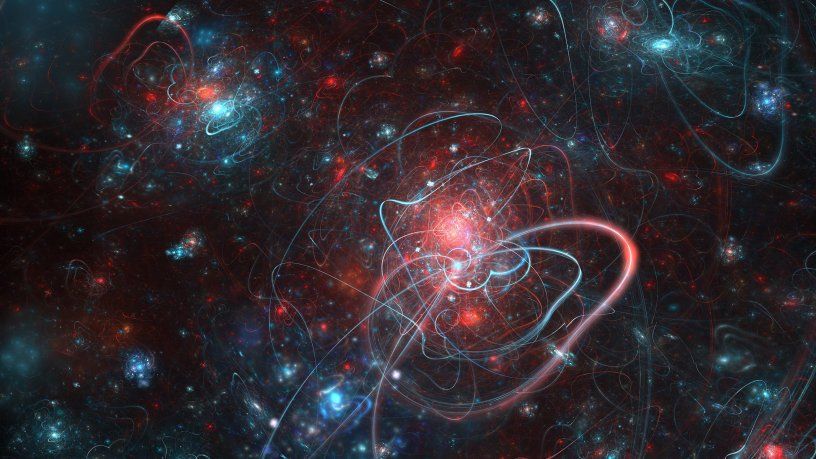
A major hurdle in this endeavor is that the number of possible four-dimensional universes is incredibly large. The small, "curled up" extra dimensions can be compactified in an enormous number of different ways (one estimate is 10500 ) each of which leads to different properties for the low-energy particles and forces. This array of models is known as the string theory landscape.
A criticism of the string theory approach is that experimental observations may never be able to distinguish which of a nearly infinite number of variations on it is correct.
Loop quantum gravity
The theory gives a physical picture of spacetime where space and time are "granular". The granularity is a direct consequence of the quantization. It has the same nature as the granularity of the photons in the quantum theory of electromagnetism and the discrete energy levels of atoms. Here, it is space itself that is discrete. In other words, there is a minimum distance possible to travel through it.
More precisely, space can be viewed as an extremely fine fabric or network "woven" of finite loops. These networks of loops are called spin networks. The evolution of a spin network over time is called a spin foam. The predicted size of this structure is the Planck length, which is approximately 10−35 meters. According to the theory, there is no meaning to distance at scales smaller than the Planck scale. Therefore, LQG predicts that not just matter, but space itself, has an atomic structure.
Today LQG is a vast area of research, developing in several directions, which involves about 30 research groups worldwide. They all share the basic physical assumptions and the mathematical description of quantum space. The full development of the theory is being pursued in two directions: the more traditional canonical loop quantum gravity, and the newer covariant loop quantum gravity, more commonly called spin foam theory.
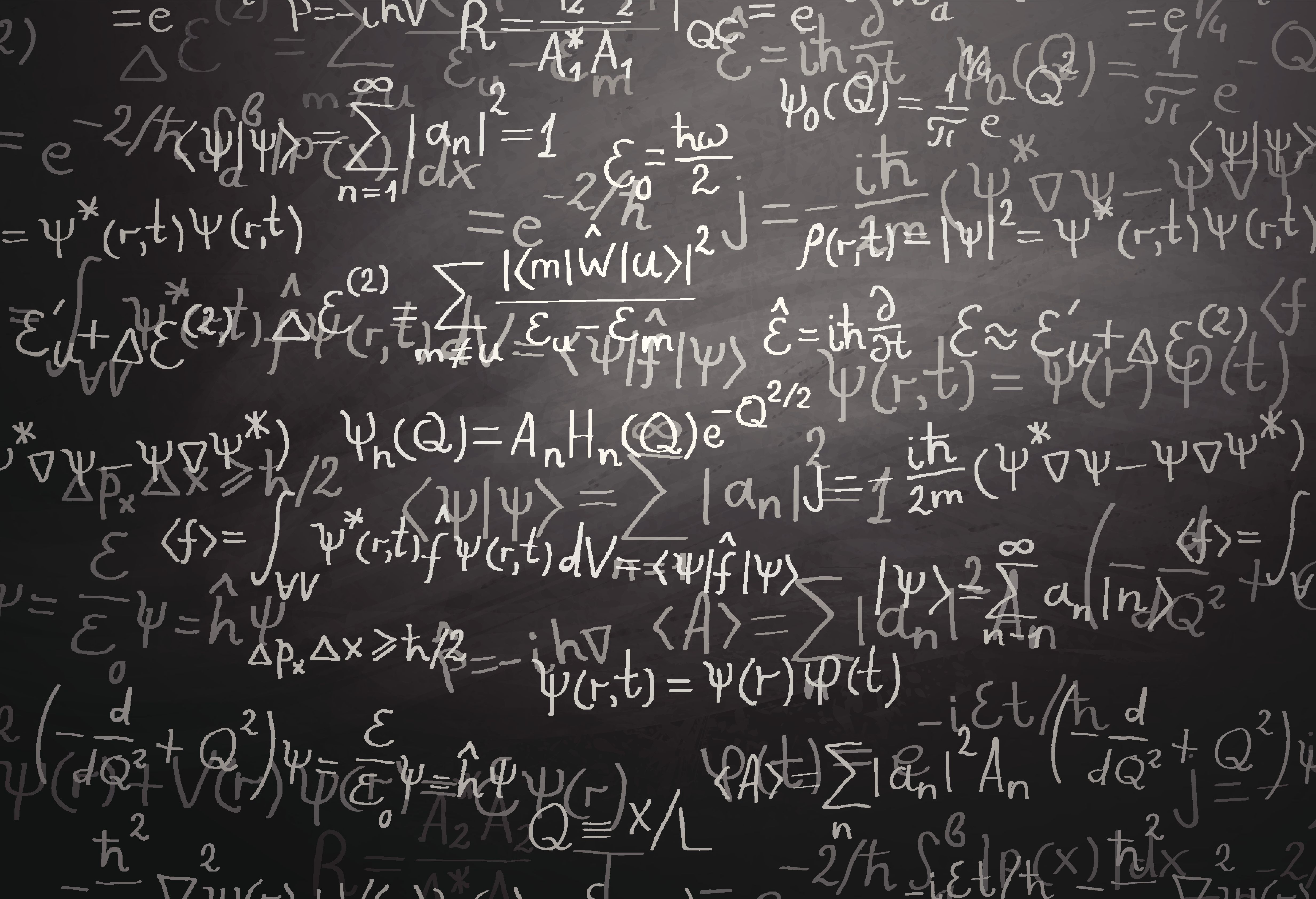
Other Theories & Attempts
- A recent development theory of causal fermion systems giving the two current physical theories (general relativity and quantum field theory) as limiting cases.
- Another attempt is called Causal Sets..
- There is Garrett Lisi's E8 proposal. This theory provides an attempt of identifying general relativity and the standard model within the Lie group E8.
- Causal dynamical triangulation does not assume any pre-existing arena (dimensional space), but rather attempts to show how the spacetime fabric itself evolves.
- Christoph Schiller's Strand Model attempts to account for the gauge symmetry of the Standard Model of particle physics,
- U(1)×SU(2)×SU(3), with the three Reidemeister moves of knot theory by equating each elementary particle to a different tangle of one, two, or three strands (selectively a long prime knot or unknotted curve, a rational tangle, or a braidedtangle respectively).
- Another attempt is ER=EPR, a conjecture in physics stating that entangled particles are connected by a wormhole (or Einstein–Rosen bridge).
Challanges & Arguments against!
In parallel to the intense search for a ToE, various scholars have seriously debated the possibility of its discovery.
Gödel's incompleteness theorem
A number of scholars claim that Gödel's incompleteness theorem suggests that any attempt to construct a ToE is bound to fail. Gödel's theorem, informally stated, asserts that any formal theory expressive enough for elementary arithmetical facts to be expressed and strong enough for them to be proved is either inconsistent or incomplete, in the sense that there is a true statement that can't be derived in the formal theory.
Stanley Jaki pointed out that, because any "theory of everything" will certainly be a consistent non-trivial mathematical theory, it must be incomplete. He claims that this dooms searches for a deterministic theory of everything.
Freeman Dyson has stated that "Gödel's theorem implies that pure mathematics is inexhaustible. No matter how many problems we solve, there will always be other problems that cannot be solved within the existing rules. […] Because of Gödel's theorem, physics is inexhaustible too. The laws of physics are a finite set of rules, and include the rules for doing mathematics, so that Gödel's theorem applies to them.
Stephen Hawking was originally a believer in the Theory of Everything but, after considering Gödel's Theorem, concluded that one was not obtainable:'Some people will be very disappointed if there is not an ultimate theory, that can be formulated as a finite number of principles.'
But Jürgen Schmidhuber (1997) has argued against this view; he points out that Gödel's theorems are irrelevant for computable physics. Also in 2000, Schmidhuber explicitly constructed limit-computable, deterministic universes whose pseudo-randomness based on undecidable, Gödel-like halting problems is extremely hard to detect but does not at all prevent formal ToEs describable by very few bits of information.
Since most physicists argue that Gödel's Theorem does not mean that a ToE cannot exist. On the other hand, the scholars invoking Gödel's Theorem appear, at least in some cases, to be referring not to the underlying rules, but to the understandability of the behavior of all physical systems.
This definitional discrepancy may explain some of the disagreement among researchers.
Fundamental limits in accuracy
No physical theory to date is believed to be precisely accurate. Instead, physics has proceeded by a series of "successive approximations" allowing more and more accurate predictions over a wider and wider range of phenomena. Some physicists believe that it is therefore a mistake to confuse theoretical models with the true nature of reality, and hold that the series of approximations will never terminate in the "truth".
Lack of fundamental laws
There is a philosophical debate within the physics community as to whether a theory of everything deserves to be called the fundamental law of the universe. One view is the hard reductionist position that the ToE is the fundamental law and that all other theories that apply within the universe are a consequence of the ToE. Another view is that emergent laws, which govern the behavior of complex systems, should be seen as equally fundamental. Examples of emergent laws are the second law of thermodynamics and the theory of natural selection.
Impossibility of being "of everything"
Although the name "theory of everything" suggests the determinism of Laplace's quotation, this gives a very misleading impression. Determinism is frustrated by the probabilistic nature of quantum mechanical predictions, by the extreme sensitivity to initial conditions that leads to mathematical chaos, by the limitations due to event horizons, and by the extreme mathematical difficulty of applying the theory.
Infinite number of onion layers
Frank Close regularly argues that the layers of nature may be like the layers of an onion, and that the number of layers might be infinite.This would imply an infinite sequence of physical theories.
The argument is not universally accepted, because it is not obvious that infinity is a concept that applies to the foundations of nature.
Impossibility of calculation
Weinberg points out that calculating the precise motion of an actual projectile in the Earth's atmosphere is impossible. So how can we know we have an adequate theory for describing the motion of projectiles? Weinberg suggests that we know principles (Newton's laws of motion and gravitation) that work "well enough" for simple examples, like the motion of planets in empty space. These principles have worked so well on simple examples that we can be reasonably confident they will work for more complex examples. For example, although general relativity includes equations that do not have exact solutions, it is widely accepted as a valid theory because all of its equations with exact solutions have been experimentally verified. Likewise, a ToE must work for a wide range of simple examples in such a way that we can be reasonably confident it will work for every situation in physics.
References:
- https://physics.stackexchange.com/questions/52385/why-do-we-need-a-theory-of-everything-toe
- https://metaphysicien.wordpress.com/2014/09/21/theory-of-everything-what-is-it-all-about/
- https://www.accessscience.com/content/unification-theories-and-a-theory-of-everything/BR0814141
- https://en.wikipedia.org/wiki/Loop_quantum_gravity
- https://en.wikipedia.org/wiki/Theory_of_everything

For more discussion on this topic (or anything related to science), please join us on steemSTEM. SteemSTEM is a community driven project which seeks to promote well written/informative Science Technology Engineering and Mathematics postings on Steemit. More information can be found on the @steemstem blog.

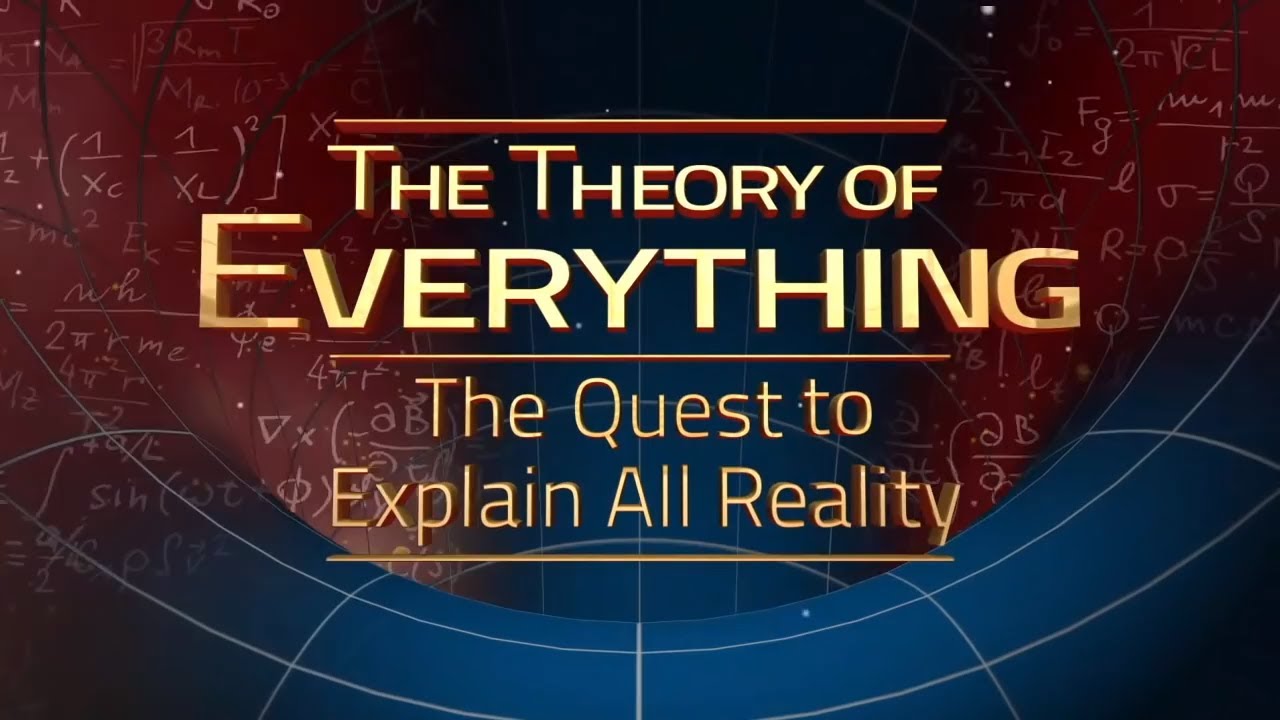
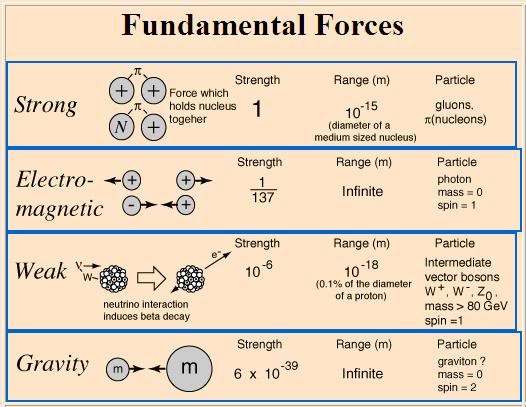

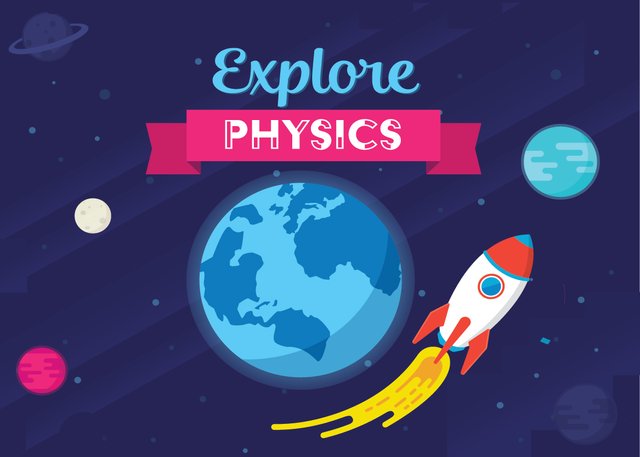

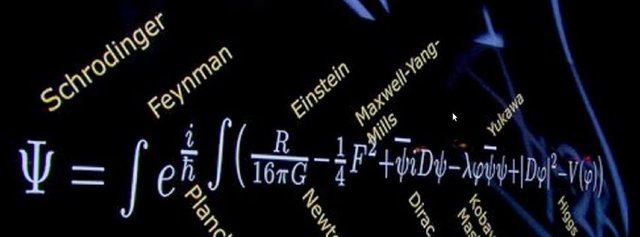
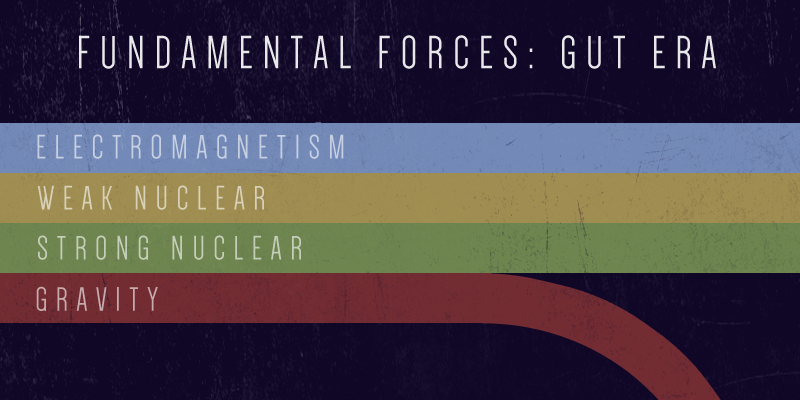
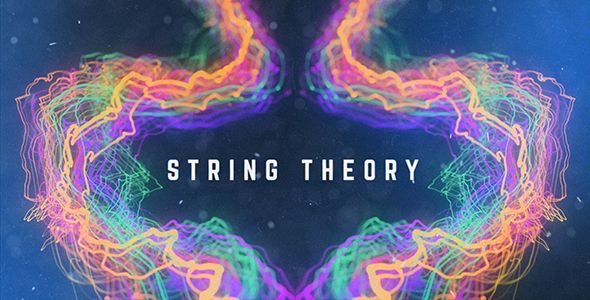
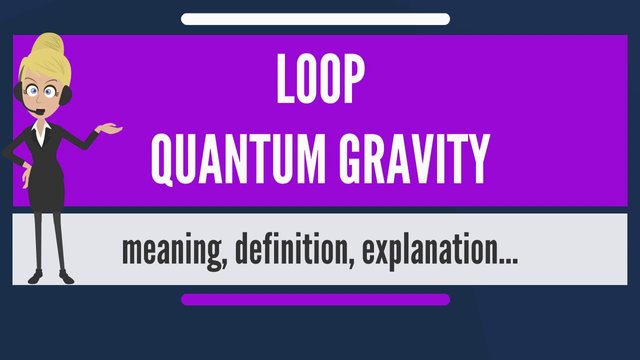

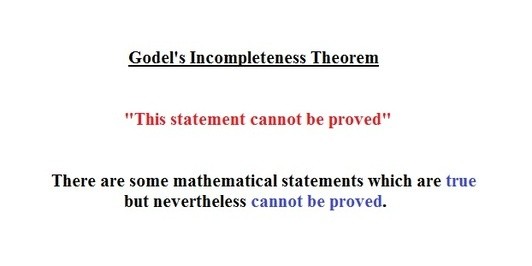
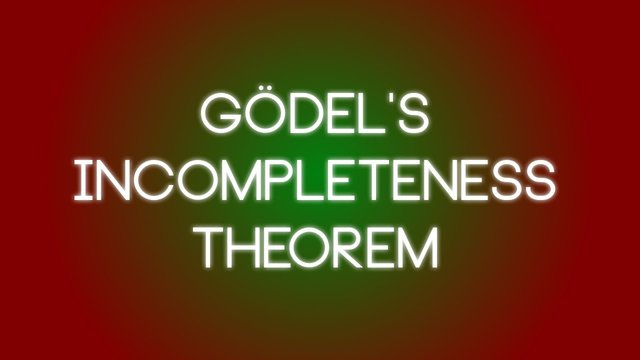
Hello,
You post is a complete 100% copying and pasting from the sources given with ZERO original content added.
Copying/Pasting full texts without adding anything original is frowned upon by the community.
These are some tips on how to share content and add value:
Repeated copy/paste posts could be considered spam. Spam is discouraged by the community, and may result in action from the cheetah bot.
If you are actually the original author, please do reply to let us know!
Thank You!
More Info: Abuse Guide - 2017.
100% Upvote. Nominated to @earthnation for a Boost and Resteem.
Greetings! I am a minnow exclusive bot that gives a 5X upvote!
I recommend this amazing guide on how to be a steemit rockstar!
I was made by @EarthNation to make Steemit easier and more rewarding for minnows.
Very impressive @etheralcreation. Resteemed/upvoted by the EN Guild.
Your content would be very welcome and supported in the Earth Nation. Post using the #earthnation tag and join our steemit guild for constant boosts https://asc.ai/steemit
Nice
Posted using Partiko Android
You got a 1.01% upvote from @allaz courtesy of @etherealcreation!
Give visibility to your articles.
Get an upvote 2.5 to 3 times bigger than your send.
Read the explanations on @friends-bot
FRIENDS-MINNOWSBOT is a new bot made for beginners.
This post has received a 4.20 % upvote from @getboost thanks to: @etherealcreation.
This wonderful post has received a @etherealcreation 5.27% upvote from @anadolu. Discord Channel: https://discord.gg/WVJW7AC You can vote in the name of the odl. https://steemit.com/~witnesses
This wonderful post has received a @etherealcreation 5.27% upvote from @mrswhale. Discord Channel: https://discord.gg/WVJW7AC You can vote in the name of the odl. https://steemit.com/~witnesses
theory of relativity and quantum theory is quite intresting.i took few days to understand about this topic :) but you explained it well
you are doing great,really both are hard to understand.
Resteemed by @resteembot! Good Luck!
Curious?
The @resteembot's introduction post
Get more from @resteembot with the #resteembotsentme initiative
Check out the great posts I already resteemed.